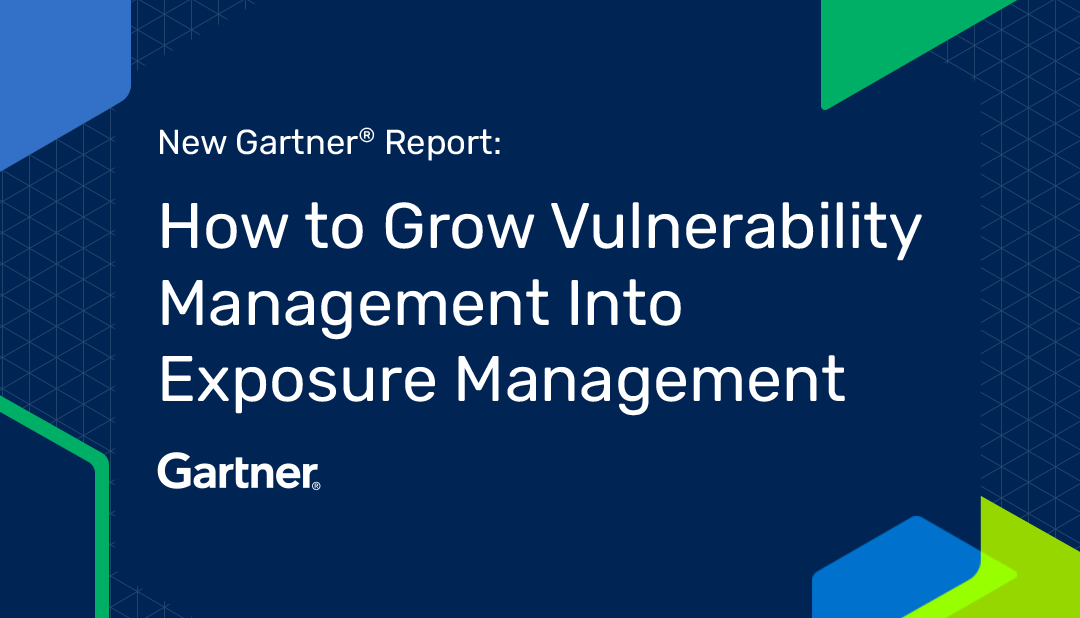
Unified Vulnerability and Exposure Management: 4 Approaches Compared

As cyber threats grow in volume and sophistication, organizations are recognizing that not all vulnerabilities are created equal. Traditional vulnerability management approaches—centered solely on scanning and patching—can no longer keep up. To focus efforts where they matter most, unified vulnerability and exposure management (UVEM) is now essential.
But how you implement UVEM can make or break your program’s effectiveness. Most organizations take one of four approaches:
- Manual processes (e.g., spreadsheets)
- Build-your-own tools
- Bolt-on risk scoring from existing vulnerability management platforms
- Dedicated stand-alone UVEM platforms
Each approach varies in terms of effort, scalability, accuracy, and cost. Here’s how they compare—and how to decide which one is right for your organization.
Manual Vulnerability Management Processes: Spreadsheet-Driven
Manual approaches to UVEM rely on spreadsheets or basic ticketing systems to track, sort, and prioritize vulnerabilities. They represent a common first step for early-stage security teams.
| Pros | Cons |
|---|---|
| Low upfront cost: No new software or licenses are typically required. | Labor-intensive and time-consuming: Every update, status change, or prioritization must be done by hand. |
| Familiarity: This approach relies on tools such as spreadsheets that are used throughout the course of daily work. | Prone to human error: Mistyped entries, outdated risk scores, and inconsistent logic are common. |
| Quick to implement: Anyone can start right away with Excel or Google Sheets. | Lack of real-time insights: Static documents mean decisions are always based on yesterday’s information. |
| Control over process: You decide what to track and how to display it. | No integration or automation: Data must be copied manually from scanners, CMDBs, or ticketing systems. |
While manual processes may suffice for very small environments or teams managing a few data sources, they do not scale and often lead to blind spots as data volumes grow.
Build-Your-Own Vulnerability Management Platform: The Custom Code Approach
Build-your-own approaches to UVEM are sometimes adopted by large enterprises with robust internal development teams and virtually unlimited budgets. Objectives frequently include aggregating scanner data, assigning risk scores, and managing remediation workflows.
| Pros | Cons |
|---|---|
| Tailored to your environment: You define your data model, risk algorithm, integrations, and workflows. | High development and maintenance overhead (e.g., cost): Building and supporting a platform is complex and resource-intensive. |
| Integration flexibility: Can be deeply integrated with in-house systems or niche tools. | Technical debt risk: As security threats and technologies evolve, your homegrown system may lag behind or require constant updates. |
| Supports custom metrics and reporting: If you have specialized KPIs or compliance needs, this gives you full control. | Talent drain: Requires both engineering and cybersecurity expertise — a rare combination that’s hard to retain. |
| Support burden: Homegrown solutions often pass to many different owners throughout their lifecycle due to staffing and resourcing changes, resulting in support gaps and maintenance challenges. | |
| Slower time to value: Building from scratch can take months (or years), leaving your organization exposed in the meantime. |
A build-your-own UVEM approach may work for mature enterprises with very specific needs and significant in-house capabilities. But for most, the cost and complexity outweigh the benefits.
Wondering whether to build in-house or go with a platform? Start here: Build vs. Buy: Choosing the Right Path for Unified Vulnerability and Exposure Management
Bolt-On Risk Scoring from Existing VM Tools: A Middle Ground?
Many traditional VM platforms (e.g., Tenable, Qualys, Rapid7) offer bolt-on features for risk-based prioritization, such as CVSS scores, asset criticality, and threat feeds.
| Pros | Cons |
|---|---|
| Familiar environment: Security teams already using the VM tool can adopt the bolt-on module. | Limited visibility across tools: Most bolt-on modules don’t integrate well with third-party systems like CMDBs, SIEMs, cloud platforms, or business applications. |
| Faster deployment: Since it’s integrated with your existing platform, setup time is minimal. | Basic risk logic: Scoring models are often opaque, fixed, or based on a narrow set of inputs (e.g., CVSS + asset value). |
| Moderate improvement over CVSS-only prioritization: Helps surface high-priority vulnerabilities more effectively than basic scanning alone. | Rigid reporting and workflows: You get what the vendor provides, with little room for customization. |
| Vendor lock-in: You’re tied to the VM platform’s roadmap, which may not prioritize risk-based vulnerability management innovation. |
Bolt-on risk scoring is a practical first step, but its limited flexibility and ecosystem isolation can quickly become bottlenecks as organizations mature.
Need help defining a smarter prioritization model? Learn how to prioritize vulnerabilities.
Dedicated Stand-Alone UVEM Platforms: Purpose-Built for Risk Context and Scale
Platforms like Brinqa provide purpose-built solutions to unify and contextualize vulnerability and exposure data from a multitude of scanners, CMDBs, and cloud environments across the enterprise.
| Pros | Cons |
|---|---|
| Deep contextualization: Combines asset criticality, exploitability, business value, and threat intelligence for meaningful risk scoring. | Requires upfront implementation effort: Integration, data normalization, and configuration take time — especially in complex and highly customized environments. |
| Broad integrations: Ingests data from across your ecosystem — cloud, code, identity, config management, and more. | Higher initial licensing cost: You’re investing in a dedicated solution — but often with lower long-term operational cost due to automation. |
| Automated workflows: Supports policy-driven remediation, ticketing integration, and cross-team collaboration. | Organizational alignment needed: Works best when security, IT, and business teams align on goals and metrics. |
| Rich, customizable reporting: Dashboards for execs, IT, security, compliance, and more. |
Dedicated UVEM platforms are the most scalable, flexible, and effective option for organizations with complex environments and mature security programs. They enable real-time risk insights and automated remediation across your entire attack surface—not just isolated vulnerabilities—without the risk of vendor lock-in or runaway costs.
Summary Tables: Comparing UVEM Approaches
Summary Table 1: Effort, Scalability, Prioritization, Integration
| Approach | Effort | Scalability | Prioritization | Data Integration |
|---|---|---|---|---|
| Manual Spreadsheets | Very High | Poor | Weak | None |
| Build-Your-Own | Very High | Variable | Strong (if resourced) | Flexible (if resourced) |
| Bolt-On VM Add-Ons | Moderate | Mod-High | Moderate | Limited (vendor only) |
| Dedicated Platform | Low (after setup) | High | Strong | Extensive |
Summary Table 2: Accuracy, Reporting, Cost, Company Fit
| Approach | Accuracy | Reporting | Cost | Best For |
|---|---|---|---|---|
| Manual Spreadsheets | Low | Limited | Low (apparent) | Small or early-stage orgs with limited requirements and few data sources |
| Build-Your-Own | Medium-High | Customizable | Very High | Large orgs with dev capacity and unlimited resources |
| Bolt-On VM Add-Ons | Moderate | Standard, Static | Moderate | Existing VM customers with modest needs beyond existing platform |
| Dedicated Platform | High | Dynamic, Customizable | Med-High (initial) | Mid-to-large orgs with hybrid or complex environments |
No single approach fits every organization. Manual tools may serve small teams early on. Bolt-ons offer incremental gains. But for organizations ready to scale, prioritize effectively, and reduce real risk, a dedicated UVEM platform is often the most impactful path forward.
Why Brinqa for Unified Vulnerability and Exposure Management
The Brinqa vulnerability and exposure management platform is an enterprise-grade solution built to scale with your environment and risk program.
- Unmatched Integrations: Connects with over 220 tools across IT, security, and business systems to consolidate findings from infrastructure, applications, and cloud.
- Risk-Based Prioritization: Contextualizes vulnerabilities using exploitability, business impact, and threat intelligence to streamline prioritization and drive faster mitigation.
- Remediation Orchestration: Automates ticketing, grouping, ownership, and SLA tracking, enabling teams to focus on reducing real risk — not just working through checklists.
- Custom Dashboards: Delivers stakeholder-specific reporting for IT, security, compliance, and executives for greater clarity and decision-making power than generic, out-of-the-box reports.
- Scalable, Expert-Guided Deployments: Implemented and configured based on your unique needs and architecture, going far beyond the limitations of quick, cookie-cutter deployments.
With Brinqa, security teams can unify, contextualize, and act on vulnerability data—without relying on spreadsheets, building from scratch, or struggling to stitch tools together.
Join enterprise teams that have streamlined remediation, improved visibility, and cut false positives by 90%. Request a demo to see how Brinqa helps enterprise teams unify, prioritize, and remediate risk at scale.
Frequently Asked Questions
What are the risks of relying on spreadsheets for vulnerability tracking?
- Don’t scale well
- Are prone to human error
- Lack automation and real-time updates
- Cannot manage large or dynamic datasets
- High risk of missed exposures and delayed remediation
When does it make sense to build our own UVEM platform?
Build only if:
- You have a large internal engineering team with cybersecurity expertise
- You have unique integration or reporting needs
- You can support long-term maintenance and evolution with an ever-expanding budget
How do bolt-on UVEM features differ from dedicated platforms?
Bolt-ons offer basic prioritization and limited context confined to a specific vendor’s ecosystem. Dedicated platforms go much further — aggregating data from many sources, applying richer risk models, and automating remediation workflows.
What kinds of tools should a UVEM platform integrate with?
- Vulnerability scanners (e.g., Tenable, Qualys, Rapid7)
- Cloud security tools (CSPM, CWPP)
- Application security (SAST, DAST, SCA)
- Asset inventories (CMDBs, cloud platforms)
- Threat intelligence feeds
- Ticketing/ITSM tools (e.g., ServiceNow, Jira)
What ROI can we expect from investing in UVEM?
Organizations typically see:
- Faster mean time to remediation (MTTR)
- Reduced vulnerability noise (up to 90% fewer false positives)
- More efficient use of IT and security staff
- Stronger compliance posture and board confidence
How do I know if we’re ready for a dedicated UVEM platform?
You’re likely ready if:
- You’re overwhelmed by vulnerability volume
- Prioritization is unclear or inconsistent
- Tools and data are fragmented
- Security and IT lack alignment
- Stakeholders need better visibility
Ready to evaluate a best-in-class UVEM platform? Request a demo.


